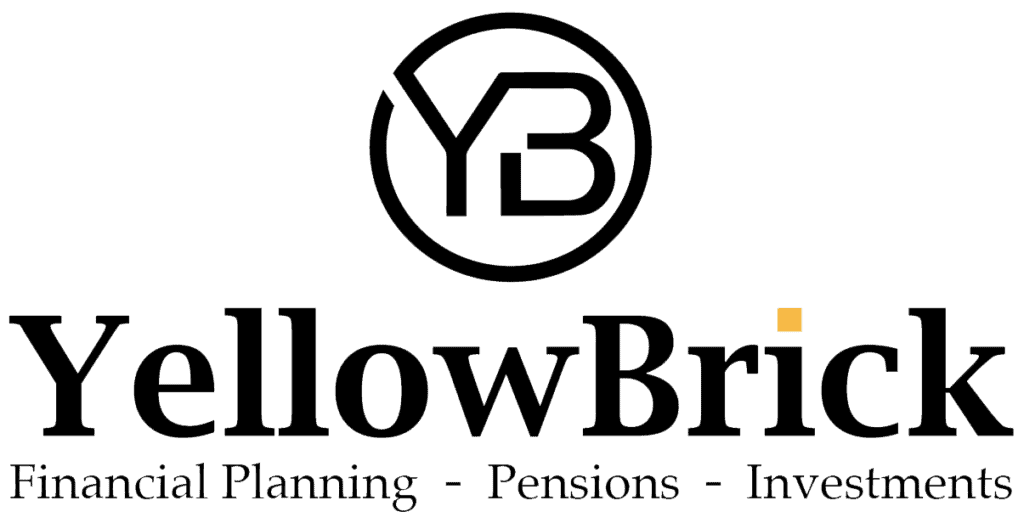Self-Employed Pensions
- Independent Financial Advisers
- Whole of Market Advice
- You can contact us 24/7, we're always available to help
Home » Financial Planning » Self-Employed Pensions
Self-Employed Pensions
Andrew Edge from Yellow Brick Financial Planning talks to us about self-employed pensions.
Why is it important that self-employed people set up a pension?
Some self-employed people say that their business is their pension, and they’ll sell it when they want to retire. But for many, they ARE the business. So if they retire, the business will have no value.
That’s the first point to bear in mind. Secondly, if your business is your pension and your business goes bust, then not only have you lost your work but you also have no pension to fall back on.
The self-employed are entitled to the same basic state pension as everyone else, which is all dependent on their national insurance record. So if you are self-employed, please bear in mind too that saving into a pension can be more difficult than for people in employment because there’s no one to choose a pension scheme for you. There are also no employer contributions. Your income is also likely to fluctuate. There are many advantages to having a pension, which we’ll touch on shortly.
Is it worth having a pension as someone who is self-employed?
Most certainly. There are tax breaks not to miss out on. A self-employed individual will get tax relief on their contributions up to the value of their annual earnings or £40,000 a year, whichever is the lower.
So, for example, if you’re a basic rate taxpayer and you contribute £100 from your earnings into a personal pension or a pension arrangement, it will only actually cost you £80 – the government adds an extra 20% or £20 on top, which is what it would have taken in income tax from that £100.
In addition, if you’re a high rate taxpayer, a 40% taxpayer whose profits are above £50,270, you would only need to pay £60 to achieve the same £100 in your pension – which is an even greater incentive.
So a pension for someone who’s self-employed is very important, partly because of those that the tax breaks on contributions. Also, bear in mind that any growth or income generated within a pension plan is exempt from capital gains tax and income tax. Again, that’s a good opportunity to have a greater fund at the time of retirement, compared with other savings vehicles.
Finally, when you decide to take your benefits at retirement, you are currently able to take 25% of the amount you’ve accumulated as a tax-free lump sum. We’re not expecting any changes to that. This is talked about regularly at budget time: whether tax-free lump sums from pension schemes will be affected, but there doesn’t appear to be any appetite for that. The Government has worked hard to promote workplace pensions and make sure people are saving for the future.
What is the most suitable pension for the self-employed?
That is going to depend on your attitude to risk and affordability. We’ve seen workplace pensions come to the fore, where employers have to put in place a pension scheme for their staff and the self-employed can also access workplace pension arrangements. This can be a good route if costs are a concern and you want to plan for retirement in as simple a way as possible. It would mean you don’t have to retain an independent financial advisor
You’ve also got personal pension arrangements if you like the prospect of superior performance. With that type of scheme, the investment funds are likely to be from the provider’s own investment library.
Finally you’ve got the self-invested personal pension. That’s more suitable for individuals who are looking for maximum investment choice and flexibility. For these, it’s highly likely that you will need to retain the services of an independent financial advisor, to guide you through that process. The costs of running that scheme are likely to be higher but the returns could be potentially greater.
What is the process for setting up a pension as a self-employed person?
I would recommend that you seek the advice of an independent financial advisor (IFA). I’ve been an IFA for over thirty years and every single client’s circumstances are different. There are trap doors you can fall through if you’re not careful. Pension legislation is complicated and you need someone to provide you with guidance.
Your IFA has a responsibility to consider your aims and objectives regarding retirement planning. We’ll explore when you hope to retire, what income you will require in retirement and, most importantly, your attitude to risk. Are you a cautious, a balanced or adventurous investor? We get under the skin of your pension plans and find out exactly what your priorities are.
Does it matter if you are a sole trader, a partner or a limited company director?
Not particularly with sole traders and partners – they are essentially the same. If you’re a limited company director you can arrange for your company to make pension contributions on your behalf. They’re treated as a business expense which will reduce your corporation tax liability.
It’s a very tax efficient way to extract capital from your company. That’s an area of advice that we provide to limited company directors. You can also look at other types of schemes that we haven’t touched on, like small self administered schemes. These can enable a company director to use their pension assets to fund a commercial property purchase, for example.
How does a self invested personal pension (SIPP) work?
You can look at a self invested personal pension plan as a type of do-it-yourself pension, but that doesn’t necessarily mean you won’t need an independent financial advisor. You will need guidance on how much to put in and where to invest it.
A self-invested personal pension plan gives you the widest exposure for investment funds covering equities and gilt & fixed interests within the UK, Europe and overseas. There’s an enormous amount of choice about where you can invest your contributions.
The contributions to a SIPP benefit from the same income tax and capital gains tax relief mentioned earlier. It’s the same as a normal personal pension plan, but it gives you much greater flexibility on investment and also greater flexibility on retirement.
Can I reduce my tax bill by paying into a pension?
You can. If you’re a basic rate taxpayer you will get 20% tax relief on any contributions that you pay into a pension plan. So as I explained, putting £100 in only costs you £80 and you get that benefit at source. It is applied by HMRC via the pension provider that you’re with. If you’re a higher rate or additional rate taxpayer, then when you file your tax return you’ll get another 20% or 25%. That comes straight off your income tax return. So that’s how you get tax relief as a higher rate or additional rate taxpayer.
How much should I pay into my pension as someone who is self-employed?
It all depends on your goals and how much you’ve accumulated to date. Some people say you should take your age, divide it by two and that’s how much you should be putting into a pension plan to give you ‘a happy retirement’. As your independent financial advisors we will give you advice based on what you’re looking to achieve at your selected retirement date and how much it will cost to get there.
But looking 25 years into the future is quite difficult. A lot can happen in that time. But dividing your age by two is a good starting point.
How much state pension will I get if I’m self-employed?
This is all dependent on your national insurance contribution record. The self-employed are treated exactly the same now as employed people. To get the full basic state pension you will need a total of 30 qualifying years of national insurance contributions or credits.
The current maximum state pension is £185.15 per week. You can obtain a state pension forecast by going onto the government website – just put in ‘form BR19’ for a state pension forecast link. Complete that online, submit it to the Department of Work and Pensions and they will come back to you with a statement on your national insurance contribution record, whether it’s sufficient and if you have met those 30 qualifying years or if not. It will also confirm what you need to do to make up that shortfall.
To get any state pension entitlement, whether you’re self-employed or employed, you need to have paid at least 10 years of national insurance contributions or credits.
What are the benefits of setting up a pension for the self-employed?
The main benefit is to provide an alternative source of retirement income in addition to the proceeds of selling your business. I cannot stress enough that being solely reliant on your business is a high risk strategy. Pension planning is just another piece of that retirement jigsaw.
Inheritance might be another area that comes into play, and we would take that into account when looking at your overall pension planning. The final piece of the jigsaw is to take advantage of tax breaks: in contributions paid, investment returns being free of income tax and capital gains tax, plus the 25% tax-free fund available on retirement.
There is a lot of choice out there, which can adapt to your specific circumstances. You may take partial retirement, for example. A lot of people today are working beyond state pension age, perhaps two or three days a week. They don’t need to use all their pension assets, but they can turn the tap on and off as they see fit. So flexibility has become a very important feature.
How can a financial adviser help with self-employed pensions?
We’re here to help our clients get from where they are now to where they want to be in retirement and beyond. It’s an important relationship that’s built on trust. We get to know everything we can about our clients and we review their affairs on a regular basis – at least once a year – to make sure that they’re on track. That’s where really the benefits of a financial advisor come into their own.
Useful Links
Why Yellow Brick Mortgages
- Unrivalled customer service
- We are an independently owned brokerage offering first charge mortgages from the whole of the market.
- Available 24/7 to ensure we are there to help when you need us.


